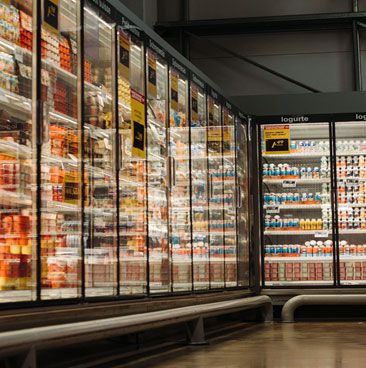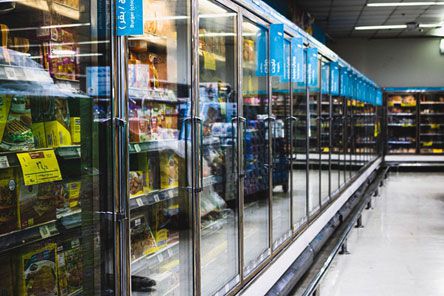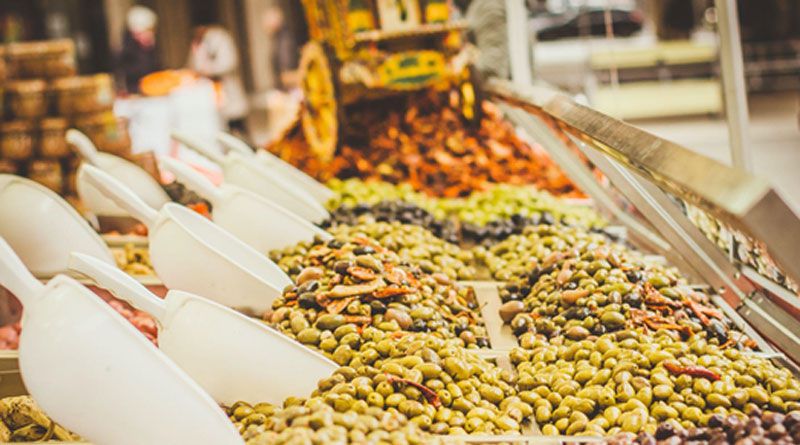Proper Food storage and transportation come with their own set of difficulties. Every food item is perishable, and each food item has their own unique needs for ambient temperatures and storing environment.
Therefore during storage and transportation of food items several hygiene restrictions must be followed. The ultimate goal is to ensure consumer food safety. For different product categories, appropriate environmental conditions – especially in terms of temperatures – must be provided in the warehouses. There are also humidity, CO2 concentration (for ripening warehouses), air movement, and other needs.
Foot Sector Rules and Regulations
In Germany, there are currently 700 statutes and ordinances pertaining to food storage and sustainable packaging. Food law is governed not only by Federal Government and Länder laws but also by European Union laws and ordinances.
Regulations (EC) No. 852/2004 (food hygiene) and (EC) No. 853/2004 (hygiene requirements for animal foodstuffs), as well as the Federal Food Hygiene Regulation, are of particular relevance to the food sector (LMHC). Moreover, The frozen food industry has its own set of rules and regulations.
Directive 89/108/EEC establishes the basic standards for handling frozen commodities (on quick-frozen foodstuffs). This covers the freezing, packaging, labeling, and inspection of frozen foods. According to the regulations, the temperature of frozen goods must be kept at -18 °C or lower at all places throughout the process.
The goal is to keep consumers safe from health risks. The international Good Manufacturing Practice (GMP) and Good Hygiene Practice (GHP) are preventive principles for steps to avoid a health hazard during production, processing, and sale, as well as hygiene in commercial kitchens. The HACCP concept is founded on the GHP. The HACCP idea is a system for hazard analysis and risk control throughout a food product’s whole manufacturing process.
Temperature For Transport
The transportation and logistics of foodstuffs at arctic temperatures ranging from -18 °C to spring-like + degrees are part of temperature-controlled food logistics.
For example, fish and fish preparations (frozen or deep-frozen) must be transported at -18°C; butter must be transported at +10°C; meat must be transported at +6°C; minced meat must be transported at +2°C; and pasteurized milk, fresh dairy products (yogurt, cream, fresh cheese) must be transported at +6°C. Transport vehicles in logistics must heat or cool depending on the outside temperature (winter, summer).
This is done with various transport vehicles, including refrigerated trailers with various cooling zones, tankers, and insulated box bodies.
Temperature Preferred for Storage

Source: https://unsplash.com/photos/NRP0iTFLzPk
Food is kept in a variety of warehouses, at various temperatures, and under various storage conditions. Foodstuffs are commonly refrigerated to -20 to -24°C in frozen food warehouses (Tiko or TK warehouses).
There are also “blast freezer” regions with temperatures as low as -35°C. The cold chain must not be disrupted. The temperature is usually +2 to +8°C in dairy products (more) or fresh fruit and vegetable storage, with increased humidity. The cleanliness standards are particularly strict here. Frozen, defrosted, and meat cold stores all have various temperatures.
Temperatures of -1 to +2 °C are recommended in cold storage rooms, 10 °C in defrosting areas (2-15 °C with airflow) in defrosting areas, and at least -18 °C in freezing rooms. Fresh meat (except poultry) +7 °C, poultry products +4 °C , meat preparations from EU-approved establishments (self-service packed) +4 °C are the temperature requirements (maximum temperature) for food from animal origin.
In general, constant temperature monitoring in storage and processing and strict cleanliness regulations assure optimal quality.
Transport Containers
When transporting food, the time it takes to get there is crucial. Food is increasingly being ordered through e-commerce or e-grocery websites. A quick delivery time is especially important on the last mile. Innovative packaging for refrigerated transport, particularly with passive cooling, is in high demand today, offering up new options for commodities distribution and storage.
This packaging is very useful if the consumer is not at home when the package is delivered. Even without active cooling, the required temperature range can be maintained for up to 48 hours over the whole cold chain in logistics.
Container variations, modular insulating inserts, cold packs, and bottom partitions make up the system. It can be used to transport a wide variety of foods in a compact manner. The container can be configured in a variety of ways. Because the inserts come in various sizes, one box can accommodate two separate fresh and temperature zones.
Moreover, if you’re looking for packaging materials, you should contact the local packaging manufacturers, where you want to ship your food items. As, the local manufacturers will have a better idea about the food safety protocols in that area. For example, if you want to ship your items to Hyderabad, you contact the pouch manufacturers in hyderabad.
Shelf Life

Source: https://unsplash.com/photos/w8X2pbw4O2g
The Federal Office of Consumer Protection and Food Safety has made it clear that “The minimum durability date, also known as the best-before date, is the last date after which a packaged food can be stored and consumed while maintaining its specific properties.
Until the expiration date, the odor, taste, texture, nutritional value, color, and consistency must be unchanged. Food can often be stored and used after this date if the proper storage conditions are followed in each case, such as cool or dry storage.”
Maintaining the correct delivery sequence (First In – First Out, FIFO) for the best-before date (BBD) is critical in commercial food storage to keep food shrinkage to a minimum. Flow racks (unit load and pallet flow racks) are especially useful in this situation.
On one side, the flow rack system is filled with items, which are then removed on the other. The FIFO concept makes it easier to keep track of expiration dates, batches, and manufacturing lines. A shuttling rack storage system can ensure the FIFO principle.
Conclusion
The way food is stored, particularly during transportation, has a significant impact on its safety and quality. Food handlers must limit hazardous microbes’ access to their products and inhibit population expansion and colonization in order to preserve decent food quality.
Make sure to follow food safety protocols mentioned in this article, which is storing or transporting your food items.

Namaste UI collaborates closely with clients to develop tailored guest posting strategies that align with their unique goals and target audiences. Their commitment to delivering high-quality, niche-specific content ensures that each guest post not only meets but exceeds the expectations of both clients and the hosting platforms. Connect with us on social media for the latest updates on guest posting trends, outreach strategies, and digital marketing tips. For any types of guest posting services, contact us on info[at]namasteui.com.

